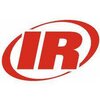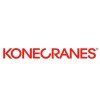
i
Nash
Industries
Filter interviews by
Nash Industries Interview Questions and Answers
12 Interview questions
Powder coating is a dry finishing process that applies a protective and decorative layer to various surfaces using powdered paint.
Uses a dry powder instead of liquid paint, which is electrostatically charged.
Commonly applied to metals, plastics, and wood surfaces.
Provides a durable finish that is resistant to chipping, scratching, and fading.
Examples include automotive parts, appliances, and outdoor furniture.
Curi...
I will implement a more efficient inventory management system, streamline the ordering process, and improve staff training.
Implementing a barcode scanning system to track inventory levels accurately
Creating standardized procedures for ordering and restocking
Providing regular training sessions for staff on proper inventory management techniques
By implementing strict inventory management procedures, conducting regular audits, utilizing technology for tracking, and training staff on proper inventory handling.
Implementing strict inventory management procedures to ensure accuracy
Conducting regular audits to identify and rectify any discrepancies
Utilizing technology such as inventory management software for real-time tracking
Training staff on proper inventor...
Implemented various process improvements to increase efficiency and reduce waste.
Implemented lean manufacturing principles to streamline production processes
Introduced new technology to automate repetitive tasks
Optimized scheduling to minimize downtime and maximize output
Implemented training programs to improve employee skills and productivity
Ultimate uptime refers to the maximum amount of time a system or equipment is operational without any downtime.
Ultimate uptime is a measure of reliability and efficiency in production processes.
It is often expressed as a percentage, indicating the amount of time a system is operational compared to the total time.
For example, if a machine has an ultimate uptime of 99%, it means it is operational 99% of the time and...
Yes, I am physically capable of working 8 hours a day standing on a machine.
I have previous experience working in a similar environment where I had to stand for long periods of time.
I am physically fit and able to handle the demands of standing for extended periods.
I am willing to take breaks as needed to ensure my health and safety while working on the machine.
Interacting with customers involves active listening, clear communication, empathy, and problem-solving skills.
Listen actively to understand customer needs and concerns
Communicate clearly and effectively to provide information and solutions
Show empathy and understanding towards customer's situation
Use problem-solving skills to address customer issues and provide satisfactory resolutions
Feedback circuit for LLC Half Bridge Converter ensures stable output voltage and current regulation.
The LLC Half Bridge Converter uses a resonant tank circuit for efficient power conversion.
Feedback is typically taken from the output voltage to regulate the input to the controller.
Common controllers include PID controllers for maintaining output voltage stability.
Example: Use an opto-isolator for feedback to ensur...
No, not everything has a price tag.
Some things are priceless, such as love, happiness, and memories.
There are also things that cannot be bought with money, such as time and health.
However, in a business context, most things do have a price tag.
It ultimately depends on the perspective and context of the question.
For example, a company may offer free services or products as part of a marketing strategy.
Aspects and impacts are key concepts in environmental management. Standards can be classified into different categories.
Aspects refer to the activities, products, or services of an organization that can interact with the environment.
Impacts are the consequences of these interactions on the environment.
ISO 14001 standard provides guidelines for managing environmental aspects and impacts.
Standards can be classified ...
Nash Industries Interview Experiences
29 interviews found
I appeared for an interview in Apr 2025, where I was asked the following questions.
- Q1. What is the powder coating
- Ans.
Powder coating is a dry finishing process that applies a protective and decorative layer to various surfaces using powdered paint.
Uses a dry powder instead of liquid paint, which is electrostatically charged.
Commonly applied to metals, plastics, and wood surfaces.
Provides a durable finish that is resistant to chipping, scratching, and fading.
Examples include automotive parts, appliances, and outdoor furniture.
Curing pr...
- Q2. Powder coating defects
Interview Preparation Tips
I applied via Naukri.com and was interviewed in Apr 2024. There were 2 interview rounds.
(2 Questions)
- Q1. What are the Improvement done
- Ans.
Implemented various process improvements to increase efficiency and reduce waste.
Implemented lean manufacturing principles to streamline production processes
Introduced new technology to automate repetitive tasks
Optimized scheduling to minimize downtime and maximize output
Implemented training programs to improve employee skills and productivity
- Q2. Availability time increased
(2 Questions)
- Q1. What is the reason for job change
- Q2. Facilities and hike
Interview Preparation Tips
(2 Questions)
- Q1. How you are controlling the inventory without variances?
- Ans.
By implementing strict inventory management procedures, conducting regular audits, utilizing technology for tracking, and training staff on proper inventory handling.
Implementing strict inventory management procedures to ensure accuracy
Conducting regular audits to identify and rectify any discrepancies
Utilizing technology such as inventory management software for real-time tracking
Training staff on proper inventory han...
- Q2. What changes you will bring in Stores process?
- Ans.
I will implement a more efficient inventory management system, streamline the ordering process, and improve staff training.
Implementing a barcode scanning system to track inventory levels accurately
Creating standardized procedures for ordering and restocking
Providing regular training sessions for staff on proper inventory management techniques
Interview Preparation Tips
I applied via Approached by Company and was interviewed in Jun 2024. There were 2 interview rounds.
(1 Question)
- Q1. Core department activities
(1 Question)
- Q1. Expected Salary
- Ans.
I expect a salary that reflects my experience, skills, and the industry standards for a Senior Project Manager role.
Research industry standards: For example, the average salary for a Senior Project Manager in my region is around $100,000 to $120,000.
Consider my experience: With over 10 years in project management, I bring valuable expertise that justifies a higher salary.
Factor in the company's size and budget: A large...
(2 Questions)
- Q1. Cycle time study
- Q2. Line balancing activity
(1 Question)
- Q1. Basic about sheet metal stamping
Interview Preparation Tips
I applied via Naukri.com and was interviewed in May 2023. There were 2 interview rounds.

(3 Questions)
- Q1. Tell me about your self
- Q2. Tell me project life cycle
- Q3. How you will plan a project
I applied via Campus Placement and was interviewed in Aug 2023. There were 3 interview rounds.

They asked basic programs, cloud computing, computer networking
(2 Questions)
- Q1. Why do you want to join company? , how do you manage your expense of home in this salary amount?
- Q2. Introduce yourself, strength, weakness, hobbies
Interview Preparation Tips
(1 Question)
- Q1. What is ultimate uptime
- Ans.
Ultimate uptime refers to the maximum amount of time a system or equipment is operational without any downtime.
Ultimate uptime is a measure of reliability and efficiency in production processes.
It is often expressed as a percentage, indicating the amount of time a system is operational compared to the total time.
For example, if a machine has an ultimate uptime of 99%, it means it is operational 99% of the time and expe...
Skills evaluated in this interview
I applied via Campus Placement and was interviewed in Dec 2022. There were 4 interview rounds.

Aptitude, technical were asked questions were simple.
Gd topic was given and 5 min were given to prepare.
(5 Questions)
- Q1. In interview about ourself,family background and skills were asked.
- Q2. Computer skills were asked such as solidworks,catia am I able to use or not no cross questions were done.
- Q3. Will you able to work 8 hours a day standingon machine?
- Ans.
Yes, I am physically capable of working 8 hours a day standing on a machine.
I have previous experience working in a similar environment where I had to stand for long periods of time.
I am physically fit and able to handle the demands of standing for extended periods.
I am willing to take breaks as needed to ensure my health and safety while working on the machine.
- Q4. Do you have bike or not?
- Q5. Are you willingto relocate or not?
Top trending discussions






Nash Industries Interview FAQs
Some of the top questions asked at the Nash Industries interview -
The duration of Nash Industries interview process can vary, but typically it takes about less than 2 weeks to complete.
Tell us how to improve this page.
Nash Industries Interviews By Designations
- Nash Industries Quality Engineer Interview Questions
- Nash Industries Production Engineer Interview Questions
- Nash Industries Industrial Engineer Interview Questions
- Nash Industries Production Manager Interview Questions
- Nash Industries Software Engineer Interview Questions
- Nash Industries Maintenance Engineer Interview Questions
- Nash Industries Graduate Trainee Interview Questions
- Nash Industries Business Analyst Interview Questions
- Show more
Interview Questions for Popular Designations
Overall Interview Experience Rating
based on 41 interview experiences
Difficulty level
Duration
Interview Questions from Similar Companies
Nash Industries Reviews and Ratings
based on 410 reviews
Rating in categories
Bangalore / Bengaluru
10-20 Yrs
Not Disclosed
|
Quality Engineer
106
salaries
| ₹1.8 L/yr - ₹5 L/yr |
|
Production Engineer
85
salaries
| ₹2 L/yr - ₹5.5 L/yr |
|
Graduate Engineer Trainee (Get)
68
salaries
| ₹2 L/yr - ₹3.4 L/yr |
|
Assistant Manager
54
salaries
| ₹6 L/yr - ₹11 L/yr |
|
Engineer
53
salaries
| ₹2.2 L/yr - ₹5.2 L/yr |

Sulzer

Kirloskar Pneumatic

Texmo Industries

JNS Instruments
- Home >
- Interviews >
- Nash Industries Interview Questions













